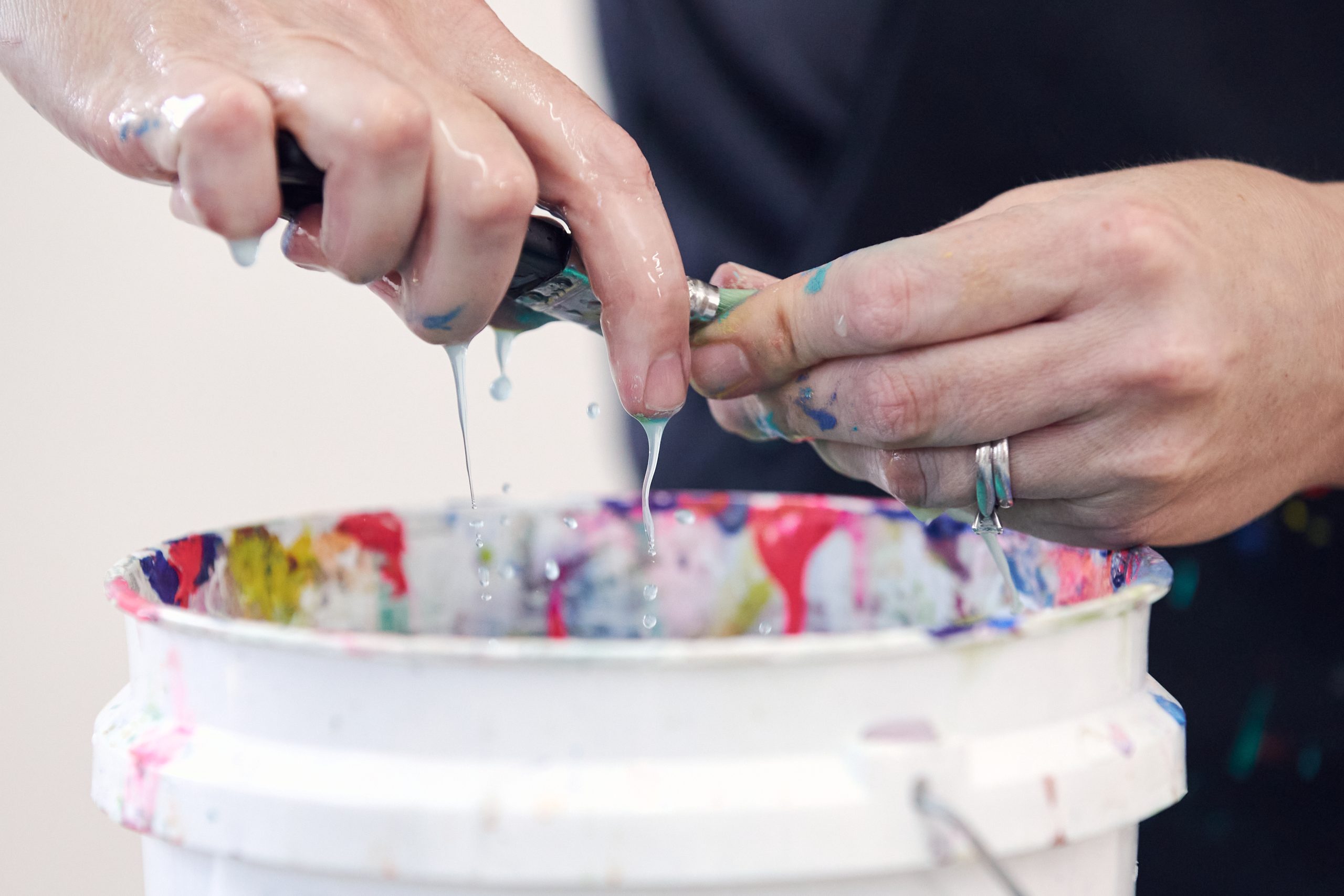Artists, Studios and Climate Data

In preparation for writing something about artist’s relationship to sustainable materials I asked around and artists responded to my question with thoughts on the environment but also the sustainability and precariousness of their practice and to sustainability and ecology as a theme in their work. All these things are connected on a profound level, what resources are used and exploited and the treatment of people and environment frequently echo one another, in the art world as much as in society as a whole.
Many artists take the recycling process deeply into their practice, working with found objects and materials. Artist Kate Street says “…items are sourced through charity shops and flea markets, I buy as little as possible from shops. I’ve always tried to operate outside a consumer setting, I’ve always had anxieties about creating ‘new objects’ in a world already full of too many things.”
Most artists feel a responsibility to make their studio practice more environmentally friendly, which for many processes is a challenge. There is often a dissonance between artist’s desire to be part of the solution, draw attention to and bring publicity to environmental issues, through making and producing objects that might be part of the problem. Studio practice, whether painting, sculpture or print making comes with a degree of toxic materials, solvents, binders, glues, sprays, harmful pigments, liquid plastics, cement, plaster, bubble wrap, foam, all have a carbon foot print in production and transport as well as hazards in their disposal.
Manufacturers have attempted to mitigate some of these by creating more environmentally friendly products, which is a welcome development. Examples of this include Liquitex’ new series of recycled canvasses and FSC timber sourcing for their stretchers. Winsor and Newton’s UK brush making plant is also using FSC wood for their handles and using rain water capture and water processing, to significantly save water in production (check out Daniel Grant’s article on environmentally friendly artist materials on Artistnetwork.com). Both brands have made efforts to eliminate harmful pigments such as cadmium.
Some caution however is required. The label of ‘green’ can refer to any single feature of the product that is greener than an alternative, useful perhaps but not the revolution you think you are paying for. The best place to look for the toxicity of a product is not in the marketing material (eco, green, nature friendly are not protected terms) but in the Health and Safety sheets SDS data sheets. This is where warnings will indicate if a product is hazardous to your health or to marine biology, if it can be safely discarded in the bin or down the drain.
Artist and printmaker Katherine Jones RA says … “I feel guilty about the use of materials all the time, as a printmaker there is so much waste. I re-use tissue paper and only use very limited amounts of white spirit, my materials for plate making are normally recycled. My plates are made from offcuts. There is a lot more that can be done. I used to run the print studio at an art school and they had a ‘low toxic’ studio with water washable ink, no nitric acid etc. Social media offer tutorials on homemade sustainability such as how to create a filtrate of acrylic paint water that can be disposed of safely, rather than poured down the sink. Watching this elaborate process, one wonders if in most places the sewage plant isn’t better placed for this process than the artist with her bicarbonate of soda and coffee filter set up. In practice the disposal of materials is often not just in the hands of individual artists.Artist Olaffur Elliasson published the carbon footprint of Ice Watch, his anti climate change installation of melting ice blocks produced for COP21, alongside the work, 30 tonnes for one exhibition. The impact of the work on the viewer and with this the possible change of future behaviour is hard to quantify, so such calculations tend to align with your belief in the power of art.
There are some initiatives in the art world to tackle the emissions at the top end of the art world, such as the Gallery Climate Coalition, who have pledged to use more zoom, more trains, more reusable packaging materials and recycled crates.
According to ACEs recent survey, the majority of artists in the UK are barely earning minimum wage. For many your carbon footprint is likely a drop in the ocean of conspicuous consumption, hubris and disposability. Do some recycling, stock up on your favourite art materials and enjoy your studio time.

